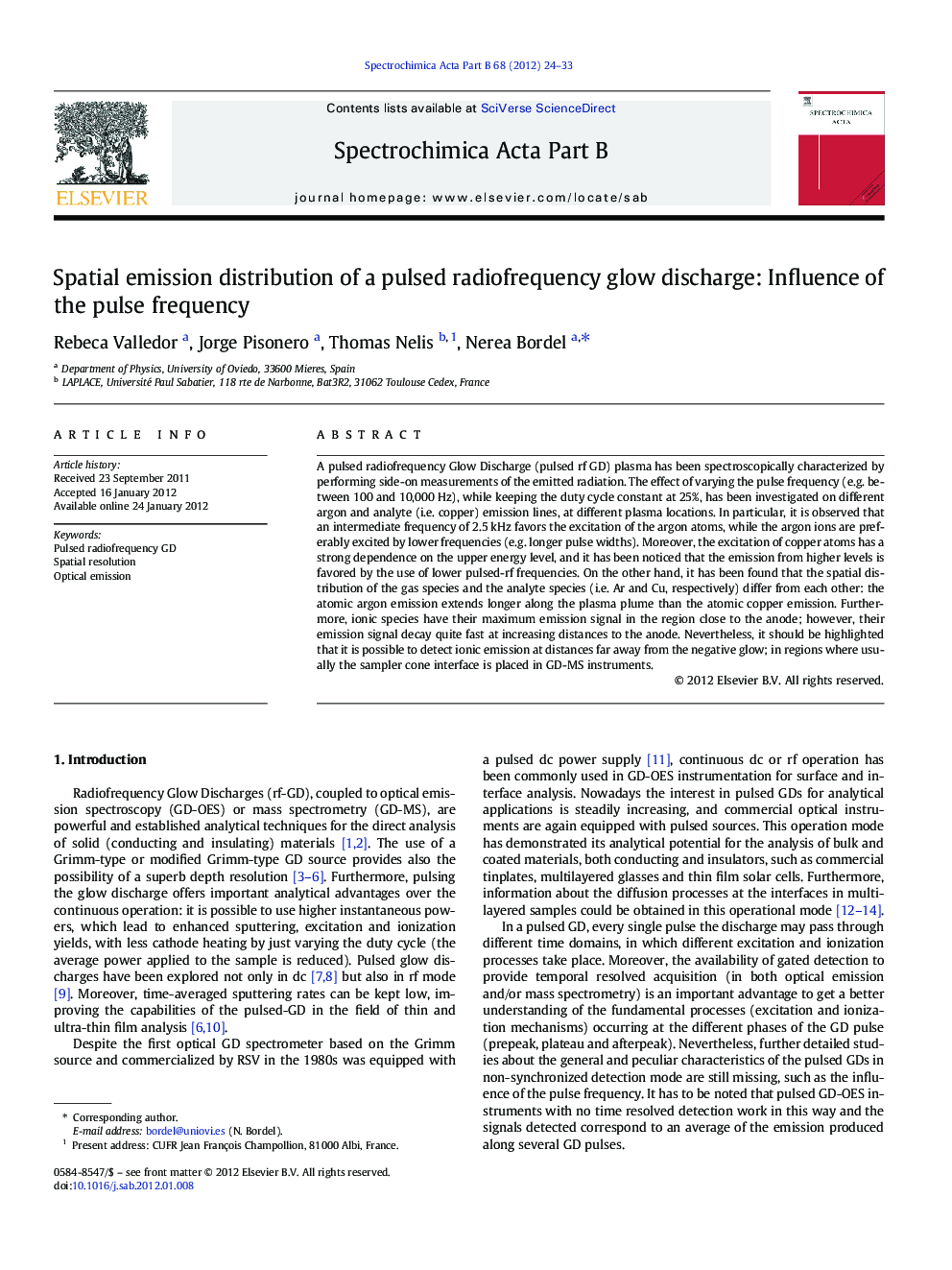| Article ID | Journal | Published Year | Pages | File Type |
|---|---|---|---|---|
| 1240606 | Spectrochimica Acta Part B: Atomic Spectroscopy | 2012 | 10 Pages |
A pulsed radiofrequency Glow Discharge (pulsed rf GD) plasma has been spectroscopically characterized by performing side-on measurements of the emitted radiation. The effect of varying the pulse frequency (e.g. between 100 and 10,000 Hz), while keeping the duty cycle constant at 25%, has been investigated on different argon and analyte (i.e. copper) emission lines, at different plasma locations. In particular, it is observed that an intermediate frequency of 2.5 kHz favors the excitation of the argon atoms, while the argon ions are preferably excited by lower frequencies (e.g. longer pulse widths). Moreover, the excitation of copper atoms has a strong dependence on the upper energy level, and it has been noticed that the emission from higher levels is favored by the use of lower pulsed-rf frequencies. On the other hand, it has been found that the spatial distribution of the gas species and the analyte species (i.e. Ar and Cu, respectively) differ from each other: the atomic argon emission extends longer along the plasma plume than the atomic copper emission. Furthermore, ionic species have their maximum emission signal in the region close to the anode; however, their emission signal decay quite fast at increasing distances to the anode. Nevertheless, it should be highlighted that it is possible to detect ionic emission at distances far away from the negative glow; in regions where usually the sampler cone interface is placed in GD-MS instruments.
► Influence of frequency on the spatial emission distribution of pulsed-rf-GD-OES. ► Ar emission is enhanced at intermediate pulse frequencies (2–3 kHz). ► Cu emission from energetic levels is favored at low frequencies (100 Hz). ► Cu emission from lower upper levels (< 4 eV) is enhanced at high frequency (10 kHz). ► Ion Cu population around sampler cone region close related to GD conditions.
